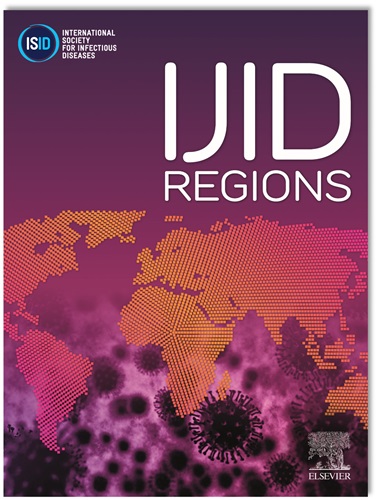卡塔尔医院抗菌药物使用模式:第一次全国点状流行病学调查结果
IF 4.3
2区 医学
Q1 INFECTIOUS DISEASES
引用次数: 0
摘要
背景:抗菌素耐药性(AMR)已成为严重的全球公共卫生危机。优化抗菌素使用对于减缓耐药病原体的发生和传播至关重要。方法:于2022年9月9日至27日在卡塔尔17家医院进行抗菌药物使用点流行调查(PPS)。调查当日上午8时入院的所有患者均为样本。数据包括患者特征、接受的抗菌素和治疗指征。结果:调查的1733名住院患者中,811名(46.8%)接受了至少一种抗菌药物治疗。在1158张抗菌药物处方中,抗菌药物占82.9% (n=961),全身抗菌药物913种,抗真菌药物48种。以肠外给药为主(83.3%,n=676)。96.3% (n= 1116)处方的适应症被记录。社区获得性感染(41.4%,n=479)使用抗微生物药物,其次是药物预防(16.8%,n=194)。第三代头孢菌素(16.8%)和青霉素/ β-内酰胺酶抑制剂联合(15.5%)是最常见的处方。对于社区获得性感染,首选青霉素联合用药(22%)和第三代头孢菌素(21%)。第一代头孢菌素占外科预防处方的46%。WHO AWaRe分类显示:获取组处方占35.5%,观察组处方占40.4%。结论:卡塔尔医院抗菌药物使用率普遍较高,以广谱抗菌药物为主。这些发现强调了迫切需要针对特定部门制定有针对性的抗菌药物管理规划,以优化使用。本文章由计算机程序翻译,如有差异,请以英文原文为准。
Patterns of antimicrobial use in Qatar's hospitals: Results from the first national point prevalence survey
Background and Objectives
Antimicrobial resistance (AMR) poses a serious global public health crisis. Optimizing antimicrobial use is critical to slowing the occurrence and spread of resistant pathogens.
Methods
Between September 9 and 27, 2022, a point prevalence survey (PPS) for antimicrobial use was conducted in 17 hospitals in Qatar. All patients admitted to the hospital wards at 8:00 a.m. on survey day constituted the sample. Data included patients’ characteristics, antimicrobials received, and therapeutic indications.
Results
Among the 1733 inpatients surveyed, 811 (46.8%) received at least one antimicrobial. Of 1158 antimicrobial prescriptions, antibacterial agents constituted 82.9% (n = 961), 913 systemic antibacterials and 48 antimycobacterial agents. Parenteral administration predominated (83.3%, n = 676). Indications were documented for 96.3% (n = 1116) of prescriptions. Antimicrobials were prescribed for community-acquired infections (41.4%, n = 479), followed by medical prophylaxis (16.8%, n = 194). Third-generation cephalosporins (16.8%) and penicillin/ β-lactamase inhibitor combinations (15.5%) were most frequently prescribed. For community-acquired infections, penicillin combinations (22%) and third-generation cephalosporins (21%) were preferred. First-generation cephalosporins comprised 46% of surgical prophylaxis prescriptions. WHO AWaRe classification showed 35.5% Access and 40.4% Watch group prescriptions.
Conclusion
Antimicrobial use in Qatar hospitals was generally high, with broad-spectrum antimicrobials predominating. These findings underscore the urgent need for sector-specific targeted antimicrobial stewardship programs to optimize usage.
求助全文
通过发布文献求助,成功后即可免费获取论文全文。
去求助
来源期刊
CiteScore
18.90
自引率
2.40%
发文量
1020
审稿时长
30 days
期刊介绍:
International Journal of Infectious Diseases (IJID)
Publisher: International Society for Infectious Diseases
Publication Frequency: Monthly
Type: Peer-reviewed, Open Access
Scope:
Publishes original clinical and laboratory-based research.
Reports clinical trials, reviews, and some case reports.
Focuses on epidemiology, clinical diagnosis, treatment, and control of infectious diseases.
Emphasizes diseases common in under-resourced countries.

 求助内容:
求助内容: 应助结果提醒方式:
应助结果提醒方式:


